2018 LatAm Seminar: Key Takeaways
May 10, 2018
Recap
- Recap
- Agenda
Recap
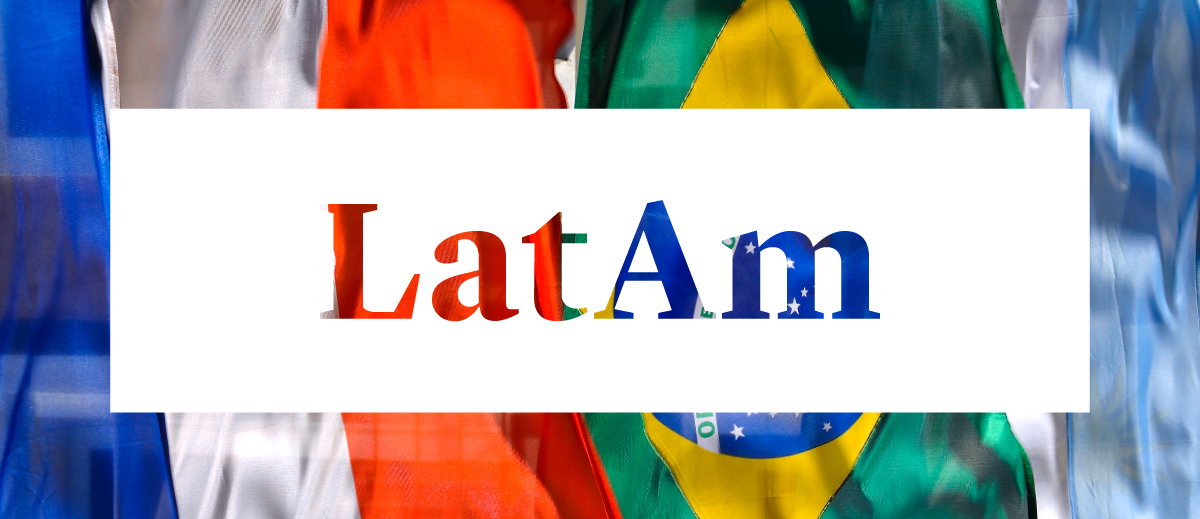
More than 200 people attended Cleary Gottlieb’s 2018 LatAm Seminar on May 10 at the firm’s New York office.
Cleary lawyers and guest speakers participated in a series of panel discussions featuring leading executives, investors, bankers, and advisors from across Latin America. Below are images and key takeaways from the event.
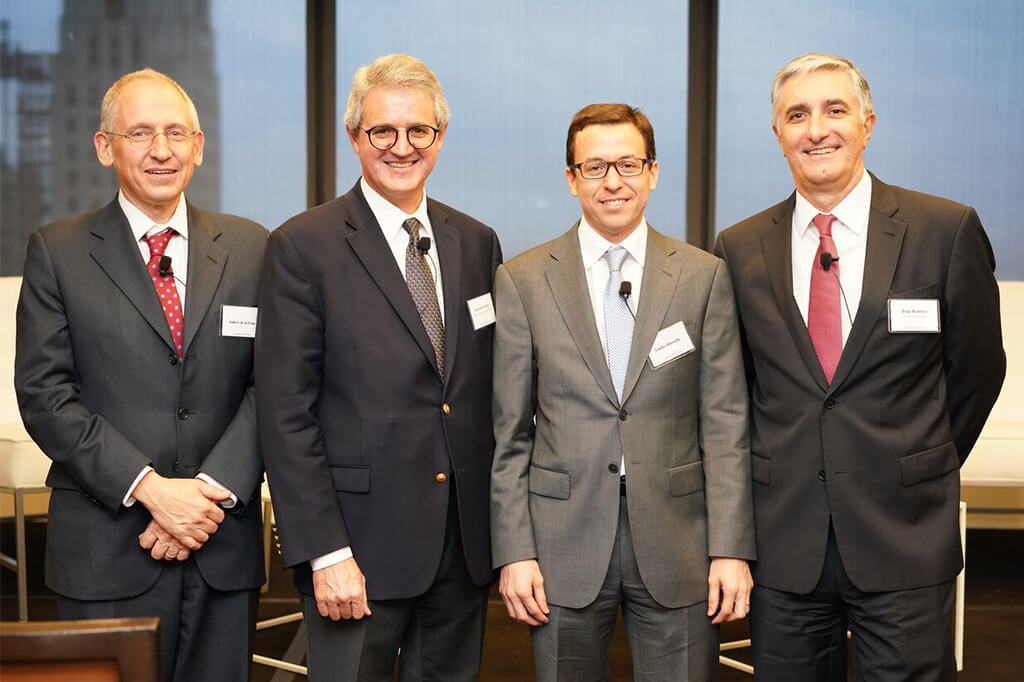
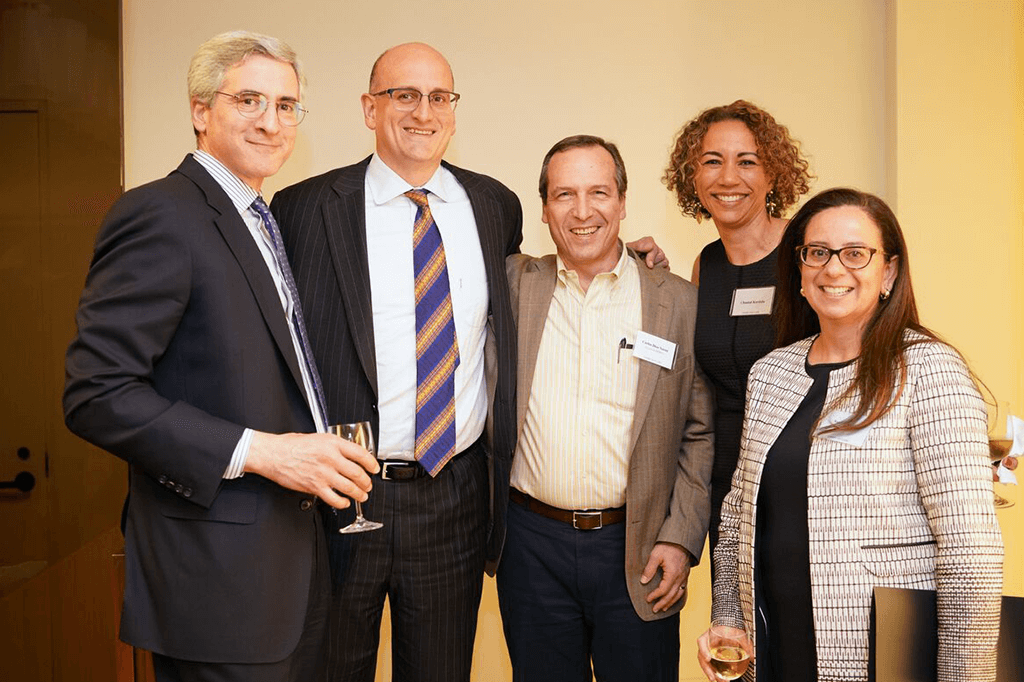
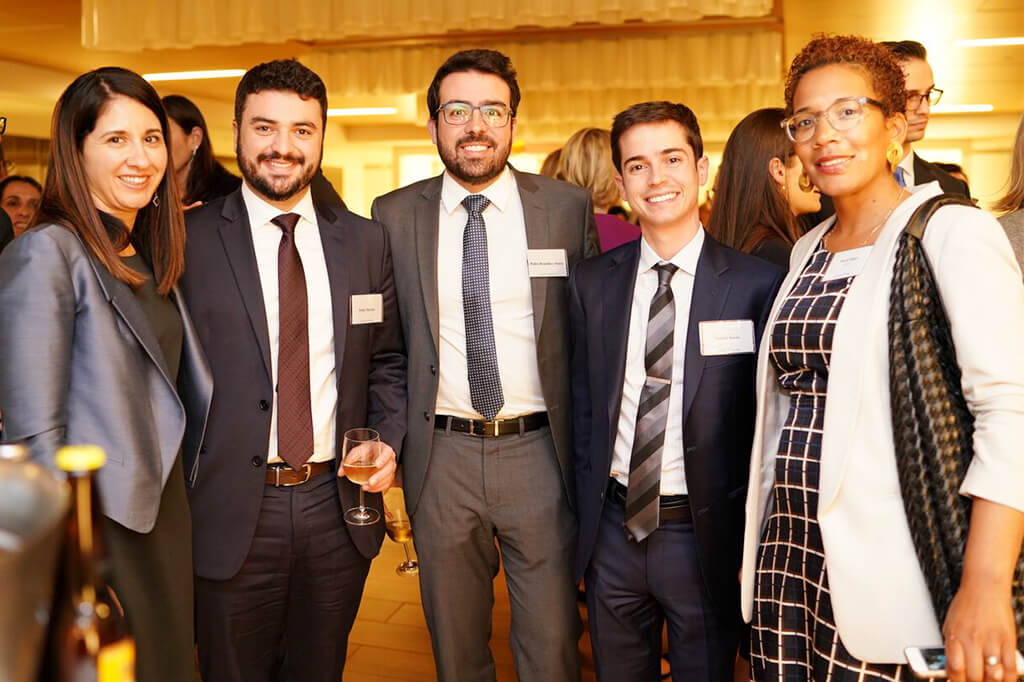
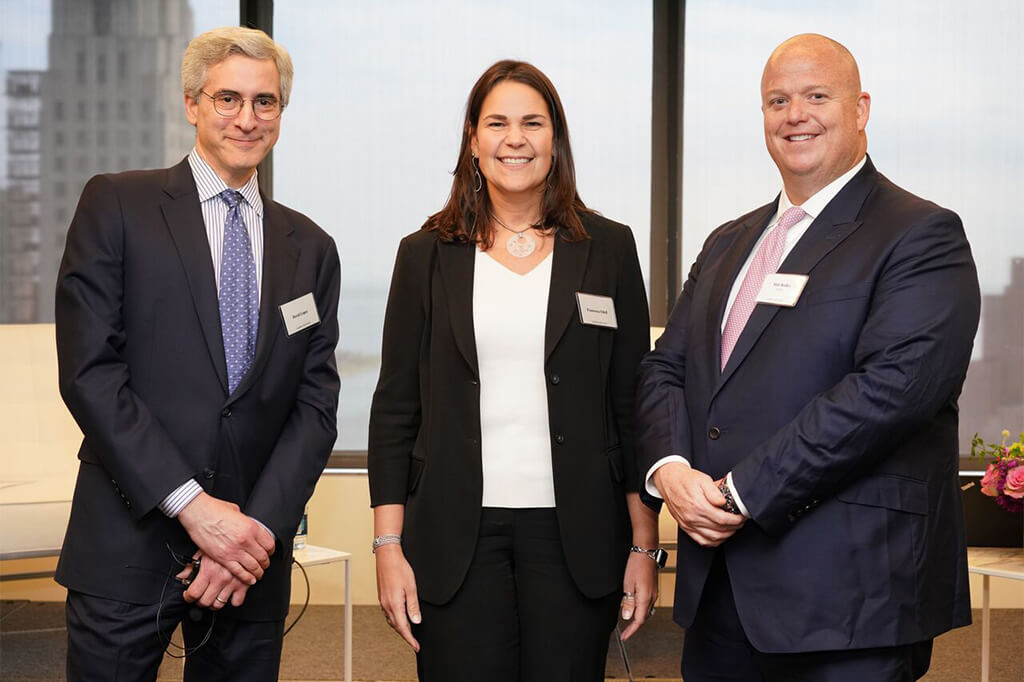
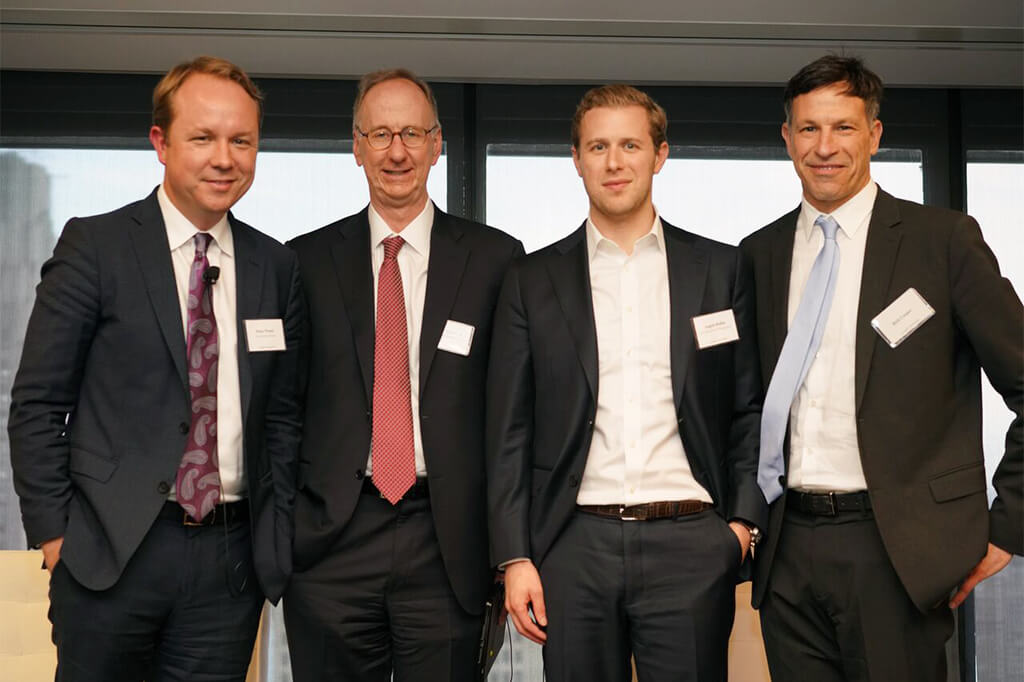
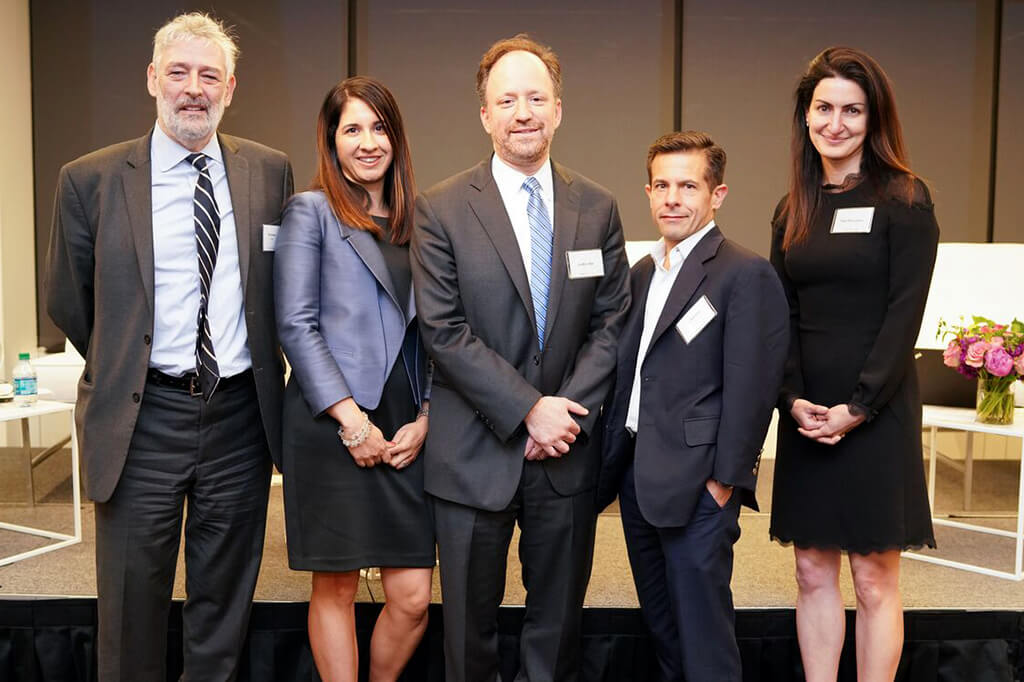
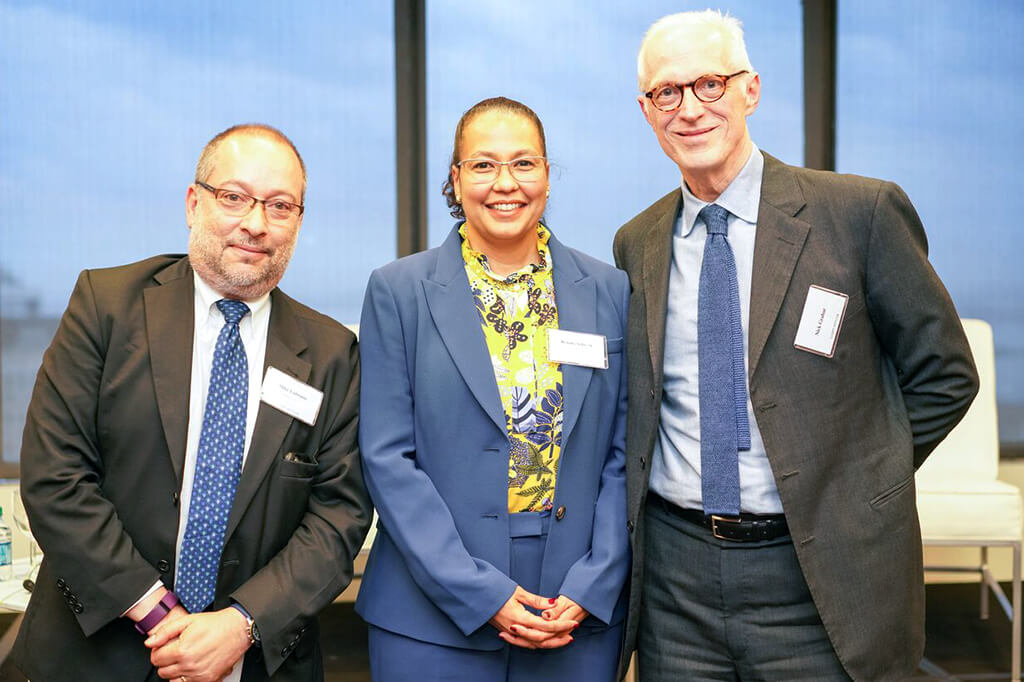
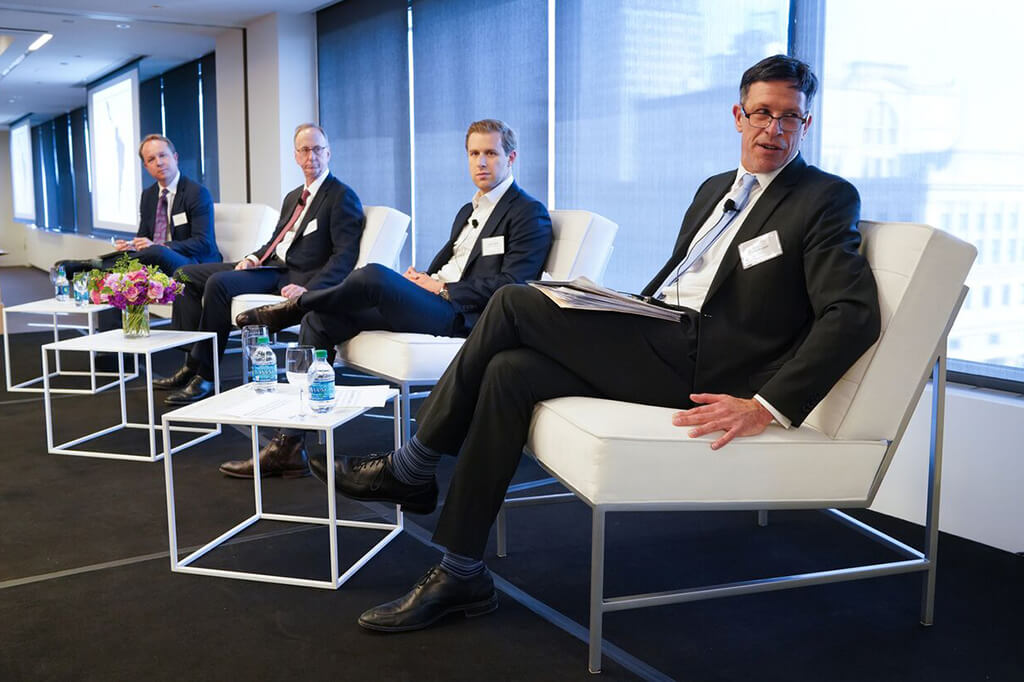
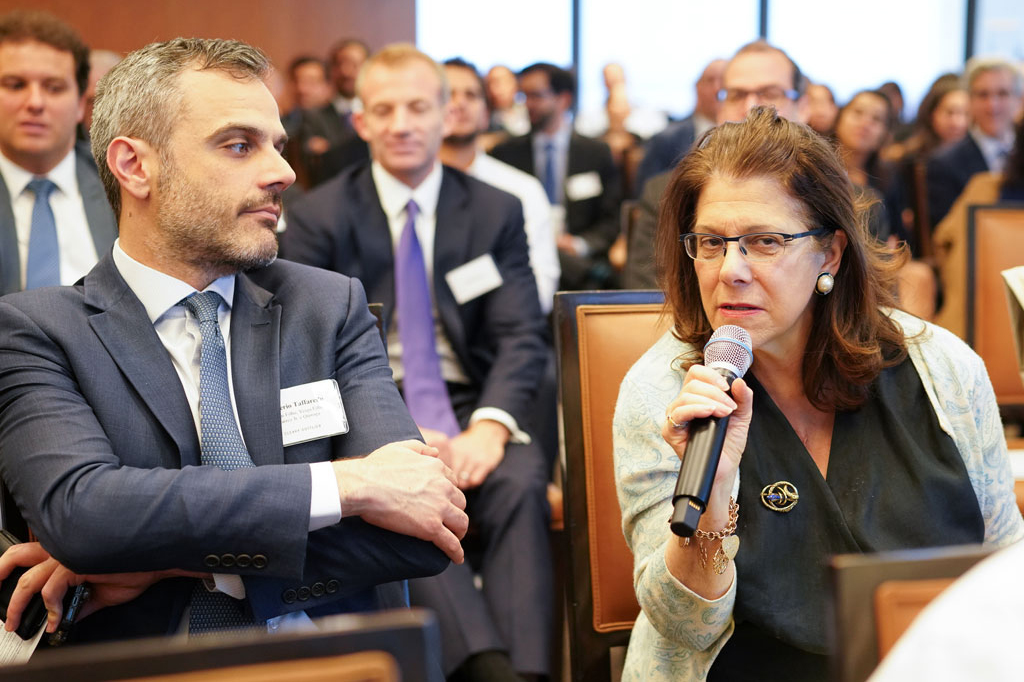









Political Uncertainty and the Latin American Business Environment
The first panel featured contributions from Cleary partner Richard Cooper, Robert Rennhack, Deputy Director of the Western Hemisphere Department of the International Monetary Fund, Brian Winter, Editor-in-chief of Americas Quarterly magazine and Vice President for Policy at Americas Society/Council of the Americas, and Angelo Rufino, Managing Partner, Portfolio Manager, and Co-head of Brookfield’s credit opportunities business.
The panel focused on upcoming elections in Latin America, including in Brazil, Mexico, Colombia, and Argentina, and the impact these elections are having on local and international financial markets and economies across the region.
The session kicked off with a discussion of the broad potential for political change in the region. The panel discussed the current political climate in the major economies that are holding elections in the next year and a half and the unique political and investment environment this convergence of elections has caused. The panel noted how recent patterns of economic growth in Latin America may contribute to the currents of political change as well as impact domestic and foreign investment in the region. The panel then discussed how this climate of uncertainty plays into investment decisions and how various micro- and macroeconomic factors are weighed from an investor’s perspective for long-term vs. short-term capital investments.
The panel then turned to a discussion of the spread of anti-establishment, populist, and nationalist campaign messages in the region and addressed the question of which country has the most at stake economically for the election season. The panel discussed key campaign elements of a number of major candidates and whether some of the more radical candidates had moderated their stances on critical economic issues in recent months. The panel discussed the potential impact the upcoming elections could have on the degree of openness to foreign trade and foreign investment across the region. The panelists then turned to the impact such anti-establishment, populist, and/or nationalist policies may have on investors, noting that investors with longer-term investments can better withstand the political ups and downs that define Latin America. The panelists looked to the example of Brazil and the success of investments in that country over the last few decades despite politics and other uncertainties.
The panel then discussed common themes, both political and economic, surfacing in this election season in Latin America. Focusing on corruption, the panel discussed the prominence of this theme across the region, including in Colombia, Peru, Brazil, and Mexico. The panelists discussed the factors that have led to corruption becoming such a dominant theme in Latin America in recent years, including the shift from dictatorships to democracies over the past few decades, the rise of social media, and the increased use of technology and mobile devices to record and disseminate evidence of corruption, among other factors. The panelists then noted how corruption acts as a drag on economic growth and impacts investment decisions. In particular, the panelists discussed investments across a variety of sectors in Brazil and how investors have assessed corruption-related risks in those contexts. Finally, the panel looked to whether any of the recent or upcoming elections provide much hope in terms of prioritizing the combat of corruption.
Finally, the panel discussed the upcoming potential elections in Venezuela. Notwithstanding the near certainty that President Nicolás Maduro will remain in power, the panelists discussed whether the IMF is planning for a lending program and how long it may take to put such a program into place, calling on past examples of similar IMF programs. The panelists considered whether there is a light at the end of the tunnel in Venezuela and what factors are at play for investors considering investments there in preparation for Venezuela’s post-Maduro future.
—
Has the Envelope Been Pushed Too Far? Developments in Liability Management
The session featured contributions from Matthew Radley, Managing Director at Bank of America Merrill Lynch, and Cleary partners David Lopez and Francesca Odell.
The first part of the session focused on two recent case studies that have shaken our understanding of the liability management landscape. The session then addressed the current boom of five-day and switch transactions, as well as their use in Latin America and some insights on where the market is heading.
The session kicked off with a discussion of Hovnanian, a homebuilder that engineered a credit event under credit-default swaps (CDS) written on their debt for the sole purpose of “clearing the market” for a liability management transaction. The panel discussed how large CDS positions in the hands of bondholders may lessen their incentive to participate in a liability management trade, particularly when a bondholder’s position in CDS exceeds its position in a company’s debt. Dealing with bondholders who look favorably on a potential default could be fatal, particularly to a company in distress.
The panel went on to discuss how the Hovnanian transaction went one step further than a typical transaction involving an engineered credit event for two reasons:
- Hovnanian was not a company in distress and still sought to reduce the amount of CDS written on their debt.
- Hovnanian engineered a new debt instrument that would trade at a price low enough that when it defaulted it would cause CDS sellers to pay out an extraordinary compensation to CDS holders; all this without harming original bondholders. Certain of Hovnanian’s investors could go on to participate in the liability management transaction, after collecting under their CDS, thus collecting a double profit.
The panel debated whether these structures posed an “existential threat” to the CDS market, as the CDS seller in Hovnanian declared. The panel then focused on the ongoing litigation that ensued from the Hovnanian trade, including complex securities law questions about market manipulation and other psychological aspects that may inform the decision of a judge, including whether companies that are affected by speculative CDS sellers could be seen with a sympathetic eye. Whether the ISDA Committee and regulators will intervene to prevent companies from “gaming” the CDS auction procedures remains an open question.
The panel then turned to the issue of “entry consents” as a strategy to dilute so-called “holdout” investors. The panel discussed how Windstream, an IT company, undertook a spin-off transaction and two years later was sued by an investor alleging that the spin-off was not permitted under its indenture. Windstream then instrumented a consent solicitation that sought to amend the provision in question. This would not be controversial, but for the fact that Windstream instrumented the consent via an exchange offer that required holders to consent to the indenture amendment before buying new notes. The effect of this feature was an immediate dilution of the holdout investor, allowing Windstream to obtain a majority of waivers when the newly issued notes were taken into account.
The panel discussed how, contrary to exit consents, entry consents may be perceived as coercive in nature and are used only when there is extreme need, mainly because they pose legal risks and could have a significant reputational impact on a company. Despite not being used very often, one panelist suggested that entry consents are still evaluated extensively as a last resort instrument: “In the case of emergency, you need to break the glass.”
As with Hovnanian, the panel went on to discuss the litigation that ensued and the uncertainty surrounding Windstream’s litigation defense strategy. The panel also speculated as to whether the holdout investor in question had a significant CDS position, betting on a default by Windstream. They also discussed the potential outcome if Windstream had resorted to a strategy like Hovnanian’s, which would have certainly pleased the holdout investor by offering a great return on its CDS at the risk of alienating other market participants, especially CDS sellers. The discussion again turned to a key question: What is the level of tolerance of judges for opportunistic investors that increase their positions in a bond just to call a default?
During the second part of the session, the panel discussed the role that five-day tender offers and exchange offers have played since the publication of the SEC’s 2015 no-action letter, with one panelist labeling them as the “cheaper and better” option for issuers. Panelists debated on the key features that make short-dated trades appealing, including reduced exposure to market volatility, the ability to use a combination of cash and new securities, and certain flexibilities around the applicable tax treatment.
The panelists contrasted the recent popularity of short-dated cash tenders with short-dated exchange offers and debated the practical hurdles around exchanges. For example, exchange offers must be for any-and-all notes, restricted to qualified institutional investors (QIBs) and/or non-U.S. persons, and companies are required to give non-QIBs an option to receive the equivalent consideration in cash. The panel also noted the practical difficulties of excluding QIBs from the parallel tenders targeting non-QIBs. In this sense, a short-dated exchange offer may not be as straightforward as an abbreviated tender offer.
Despite the potential hurdles around short-dated exchange offers, the panel noted an increase in their use by certain type of issuers in Latin America. Companies that have resorted to abbreviated exchange offers include those that have particularly large portfolios, are eligible for favorable accounting treatment—which sometimes depends on local accounting rules—and have liquid curves that facilitate price discovery. Whether short-dated exchange offers will become a viable alternative for less active issuers is up for debate.
Lastly, the panel briefly touched on the recent increase in usage of so-called “switch” transactions in Latin America, particularly in the context of sovereigns. The first version of switch transactions involves a capped tender offer and a parallel new notes offering in which participating holders get priority in the tender offer, incentivizing participation and price tension in the new money deal. The second version involves an “any-and-all” tender offer in which tendering holders get a non-binding priority in a new notes offering, increasing visibility as to participating holders in the new money deal.
The panel gave particular focus on the risks around “switch” tenders, including the legal risk of unintentionally being captured by exchange offer rules and triggering registration obligations. Features that mitigate these type of risks are just beginning to be tested, but include keeping priority features as non-binding and working closely with local accountants to make sure that any local accounting benefits are not subject to challenge. In the context of five-day tender offers, maintaining the simplicity of the structure is key.
There is a lot of room for imagination when it comes to managing debt, especially in the Latin American markets.
—
Company on the Brink: A LatAm Crisis Management Tabletop Exercise
This session featured Cleary partners Jon Kolodner, Pamela Marcogliese, and Lisa Vicens, along with Paul Holmes, CEO at Finsbury North America, and Joe Martinez, Managing Director and General Counsel of South America at Citi.
The panelists discussed a crisis management tabletop exercise relating to an ongoing—and escalating—corruption investigation. The session analyzed the critical issues that key stakeholders of a company, specifically in-house counsel, external enforcement and corporate governance counsel, and a public relations advisor, should consider in responding to a crisis and the steps they should take to best protect the company.
The subject of the exercise was a fictitious pharmaceutical company, Brazil BioPharma, that went public in 2010 and that has American Depository Receipts (ADRs) trading on the New York Stock Exchange. Brazil BioPharma’s largest production facilities are located in Brazil and are overseen by Anvisa, the Brazilian National Health Surveillance Agency. The company also provides several of its key pharmaceutical products through the Brazilian Unified Health System (the SUS), which is operated and regulated by Brazil’s Ministry of Health.
Moderator Jon Kolodner guided the panelists through the various stages of a crisis that swept up Brazil BioPharma and elicited their respective views on how to manage the crisis at each of those stages.
Phase 1
Brazil BioPharma receives an inquiry from the Brazilian tax authority relating to payments made to certain consultants purportedly hired to assist the company in managing the inspection process for its manufacturing plants. The company’s new general counsel finds that the CEO and Institutional Relations Director did not follow the company’s usual procurement process to hire these consultants and also finds no proof of services. After the tax inquiry starts, the media begins reporting on corruption allegations involving Anvisa inspectors and pharmaceutical companies operating in Brazil, but none of the media reports name Brazil BioPharma.
- Lisa Vicens explained that tax inquiries in Brazil can be a sign of a larger corruption investigation, with the authorities using the tax inquiry to hide the broader corruption matter. That said, the tax inquiry could be just that, and it was important for the company to learn the facts before taking an action.
- Joe Martinez addressed a general counsel’s need to carefully balance his or her responsibilities as a trusted advisor to the company’s CEO and other executives, and the fiduciary duty owed to the company’s shareholders. Joe agreed that at this stage the general counsel should gather the facts needed to respond to the tax inquiry and consult with the company’s audit committee to examine whether (and to what extent) there were breaches of the company’s policies and procedures.
- Pam Marcogliese agreed that the company should take time to learn about any potential breaches of controls or policies before taking further action, and noted that it would likely be premature to make any disclosures to the market at this point.
- Paul Holmes said that, if hired at this stage, a public relations company should monitor the press, identify journalists who are covering the story, and start planning for different possible scenarios.
Phase 2
Following the company’s response to the tax inquiry, in November 2017, the federal police conduct a dawn raid on Brazil BioPharma’s São Paulo offices. The media reports that the raid is part of a new police operation investigating payoffs to Anvisa inspectors.
- Joe Martinez stated that at this point the general counsel should retain outside counsel and engage the communications team. Joe described the challenges of conducting an investigation when management might be involved and flagged the importance of coordinating the company’s message with the internal and external communications teams (particularly where, as here, the company operates in a highly regulated industry).
- Paul Holmes advised that one way to manage the public fallout from the raid would be to provide a statement emphasizing the key ethical principles to which the company adheres, in order to portray the company in the best light possible while being mindful of the facts. A public relations company could also fact-check media reports, push back on inaccuracies, and help craft responses to inquiries.
- Pam Marcogliese suggested that the general counsel work with independent members of the company, such as members of the audit committee, to provide updates and obtain guidance on the issues as they progress. Pam also discussed the concern about saying too much to the market, in a way that could later prove to be false or misleading as the investigation progressed.
- Lisa Vicens advised that it might still be too early for Brazil BioPharma to self-report to authorities in the U.S. and elsewhere, particularly since the Brazilian investigation has already been made public, and it could be counterproductive for the company to rush to the regulators before it understands the facts and formulates a plan. Instead, at this point the company should attempt to understand the scope of the problem by conducting its own investigation, possibly through a special committee. Lisa stressed the importance of conducting an investigation that would be seen as credible by the authorities.
Phase 3
By February 2018, Brazil BioPharma has created a Special Committee to investigate the allegations, and the independent investigation begins to focus on the Institutional Relations Director and the CEO. It is starting to appear as if the Institutional Relations Director in particular was involved in making payments to third-party consultants that raised numerous red flags, and on March 1, the Institutional Relations Director is arrested.
- Paul Holmes explained that managing any messaging when an individual is involved can be tricky, and while most companies do not comment on personnel issues, it may be a good idea for Brazil BioPharma to make it known that it placed the Institutional Relations Director on paid leave. This would help make it clear that the company is acting appropriately and taking the investigation seriously.
- Lisa Vicens stated that, for a company with securities in Brazil and the U.S., the investigation team likely would include U.S. and Brazilian counsel, who in turn would retain a forensic accountant to support their review of the suspicious payments. The team should ensure that its work plan is appropriately scoped and executed to fully address the allegations and gather the relevant information. Lisa pointed out that the company’s auditor will likely be closely monitoring the investigation, and it would be important to coordinate with the audit team to ensure that the auditor is comfortable with the scope and credibility of the investigation. Assuming the U.S. authorities (the Department of Justice and the Securities and Exchange Commission) are involved, it also will be important to establish a dialogue relating to the investigation quickly, to demonstrate that the company is conducting a credible investigation on its own. Lisa noted the challenge of managing multiple investigations by different authorities with potentially competing interests.
- Joe Martinez said that a general counsel in this situation should place the Institutional Relations Director on leave. Because of the suspicions concerning conduct by the company’s management, the general counsel’s best interlocutor at this point is likely to be the audit committee, or perhaps the Special Committee. At this stage, the general counsel is in an increasingly difficult position and may have to cede control of the investigation to the Special Committee and its external counsel.
- Pam Marcogliese said that at this point the company would likely have disclosure obligations, particularly in Brazil given that the CVM (Brazil’s securities regulator) has a broad view of what events give rise to an obligation of disclosure (“fatos relevantes”). A “no comment” on the arrest would obviously not be acceptable when dealing with shareholders, so the company should work closely with the public relations team to create talking points that are truthful and portray the company as positively as the circumstances allow, without disclosing information that may later be disproven or require correction.
Phase 4
By April 2018, Brazil BioPharma’s independent investigation begins to uncover significant payments to consultants who deal directly with the SUS and the Ministry of Health, in addition to the Anvisa. These payments also implicate the CEO. The CEO strikes a deal with federal prosecutors and acknowledges paying bribes to several senior officials at the Ministry of Health so that the SUS would choose Brazil BioPharma’s pharmaceutical products for use in hospitals throughout Brazil. When the news of the CEO’s cooperator agreement breaks, the company’s stock price drops 20 percent. Meanwhile, the Brazilian press reports that the CEO sold a block of his stock holdings in the company in the weeks leading up to the public disclosure of his cooperation agreement.
- Paul Holmes said that a public relations professional in this situation would help guide the company in describing the remedial measures it is taking, to show the market that it is moving as efficiently and effectively as possible to address its problems.
- Joe Martinez pointed again to the general counsel’s difficult position, particularly since the CEO has entered into a cooperation agreement and is likely to be terminated. At this point, the general counsel would be fully engaged in the outside investigation, to the extent permitted by the Special Committee, and would focus on managing the global regulators and on improving the company’s policies and controls.
- Pam Marcogliese stated that this is an inflection point for the company. In addition to complying with its disclosure obligations, Brazil BioPharma should focus on its tone at the top and undergo a broad compliance review of its policies and procedures.
- Lisa Vicens stressed that it is important to work toward a global settlement of the various investigations, in order to minimize (to the extent possible) the harm to the company. The DOJ’s recently announced policy not to “pile on” penalties when there are multiple investigations by different authorities could be helpful in securing that global settlement. In order to achieve this goal, the company may well want to cooperate with the authorities and demonstrate that it has put adequate remedial measures in place. Brazil BioPharma should also plan for civil litigation stemming from the company’s stock drop.
At the end of the exercise, the panelists emphasized the importance of conducting similar tabletop exercises. Further, companies should ensure that their policies and procedures are appropriately designed to prevent and detect wrongdoing, to help avoid a crisis like the one in the tabletop.
—
Shareholders’ Rights at Latin American Public Companies: The Changing Landscape
The session on Shareholders’ Rights at Latin American Public Companies featured contributions from Renata Schmitt, Vice President at Institutional Shareholder Services (ISS), the proxy advisory firm, and Mike Lubrano, Co-Founder and Managing Director, Corporate Governance and Sustainability at Cartica Management, the emerging markets investment manager. The session was led by Cleary partner Nick Grabar and focused on current trends and recent changes in shareholders’ rights in Latin America.
Following introductions, the session turned to a discussion of controlling shareholders in Latin American companies. Because so many Latin American companies have controlling shareholders, ISS recommendations are focused on rights of minority shareholders and, in particular, their opportunities to elect directors. Cartica’s focus is on working cooperatively with management and other shareholders to effect positive governance changes. On occasion, using rules in specific jurisdictions, Cartica has been able to elect directors and make other significant governance improvements, for example in disclosures or investor relations. Mike cited Alsea, the Mexican restaurant operator, which views its minority shareholder-appointed director as a marker of its increased transparency.
The panel also discussed changes to disclosure regarding executive compensation in Brazil. Shareholders must approve aggregate executive compensation at the annual meeting. Brazil’s securities commission requires a public company to disclose the minimum, maximum, and average compensation paid to directors, but in 2010, a Brazilian executive group won a preliminary injunction against this disclosure on the basis that the required executive compensation disclosures created a personal security risk. Many Brazilian companies rely on this injunction and do not make the required disclosures. Renata explained that ISS recommends against approval of compensation where a company does not make these disclosures, and this has resulted in close votes and several times in failure of the approval of compensation. She argued that ISS’s position has contributed to improvements in disclosure practices.
The panel also reviewed emerging issues and practices in voting procedures in Latin America. The panelists noted that bundling of director candidates is common, and Renata said ISS accepts the practice. They discussed “distance voting,” an internet-based voting mechanism that Brazilian companies are now required to make available. Because of distance voting, Brazilian companies have been giving longer notice periods prior to meetings, and bundled elections have declined. The panel noted that the practice may also begin to affect how ADRs are voted.
Finally, the panelists discussed notice of shareholder meetings. Cartica and others have asked the Mexican stock exchange and securities regulator to lengthen the minimum 15-day notice period, arguing that short notice disenfranchises voters by not providing sufficient time to form an opinion and to review recommendations by advisory firms like ISS. The stock exchange agreed to draw attention to the benefit of greater notice, but the panel questioned whether practices would change absent regulation.
—
Quo Vadis Argentina? Taking Stock of Argentina Under President Macri
The session featured contributions from Jorge Oscar Ramirez, Executive Vice Chairman of Grupo Supervielle, and Juan José Cruces, Director of the Center for Financial Research, Universidad Torcuato Di Tella.
Facilitated by Cleary partner Andrés de la Cruz and counsel Emilio Minvielle, the session discussed what has been done in Argentina under President Mauricio Macri and the challenges that lie ahead.
The speakers began by recounting recent developments in Argentina and the ongoing economic and political situation, featuring a comprehensive analysis of certain metrics that showed the impact that the shift in government policy away from populism has had on the Argentine economy since December 2015. The session then engaged in a discussion of the positive market reaction, as suggested by the evolution of the trading value of the stock of Argentine companies.
The discussion then went on to explore the current challenges facing the Argentine government, including high levels of taxation and expenditure, and the political feasibility of any measure that may be adopted to correct the fiscal imbalance in the context of a negotiation with the IMF for a standby facility.
The session next turned to the real-business impact that the 2016 shift in policy has had on Argentine financial institutions, noting a consistent growth in loans and deposits as key indicators of an economy that is on track to recovery.
Agenda
New York,
Thursday, May 10, 2018 | 4:30 p.m.
One Liberty Plaza
Welcome Remarks by Nicolas Grabar, Partner, Cleary Gottlieb
Welcome Q&A Panel – Political Uncertainty and the Latin American Business Environment
Panelists:
- Richard J. Cooper, Partner, Cleary Gottlieb
- Angelo Rufino, Managing Partner, Brookfield Asset Management
- Robert Rennhack, Deputy Director of the Western Hemisphere, International Monetary Fund
- Brian Winter, Editor-in-Chief, Americas Quarterly
--
Concurrent Panel Session I
Panel I:
Developments in Liability Management – Has the Envelope Been Pushed Too Far?
Panelists:
- David Lopez, Partner, Cleary Gottlieb
- Francesca L. Odell, Partner, Cleary Gottlieb
- Matthew P. Radley, Managing Director, Bank of America Merrill Lynch
Panel II:
Shareholder Rights at Latin American Public Companies – The Changing Landscape
Panelists:
- Nicolas Grabar, Partner, Cleary Gottlieb
- Mike Lubrano, Co-Founder and Managing Director, Cartica Management
- Renata Schmitt, Head of Latin America Research, Institutional Shareholder Services
--
Concurrent Panel Session II
Panel I:
Company on the Brink — A LatAm Crisis Management Tabletop Exercise
Panelists:
- Paul Holmes, CEO, North America, Finsbury
- Jonathan S. Kolodner, Partner, Cleary Gottlieb
- Pamela L. Marcogliese, Partner, Cleary Gottlieb
- Joe Martinez, General Counsel and Managing Director, Citi
- Elizabeth Vicens, Partner, Cleary Gottlieb
Panel II:
Quo Vadis Argentina? Taking Stock of Argentina Under President Macri
Panelists:
- Juan J. Cruces, Director, The Center of Financial Research Universidad Torcuato Di Tella Business School
- Andrés de la Cruz, Partner, Cleary Gottlieb
- Emilio Minvielle, Counsel, Cleary Gottlieb
- Jorge Ramirez, Vice Chairman of the Board of Directors, Grupo Supervielle
Cocktail Reception